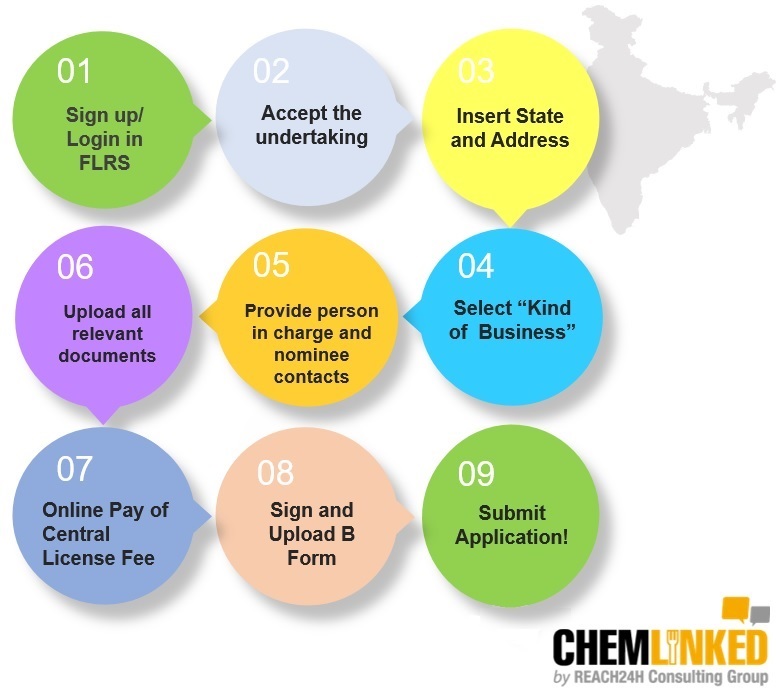1. An Overview of India's Food Industry
India is the second most populous country in the world and one of the world's biggest and fastest growing economies. A United Nations Report estimates that India’s Population will overtake China’s by 2022. Notwithstanding the serious hunger situation that still afflicts some areas of the country, Indian middle class (people spending between 2 and 10 dollars per day) has doubled in size to 600 million people, almost half of its population. Urban population is also expanding steadily, now reaching 30% of the total presenting opportunities for foreign food products.
Also as a result of FDI policy towards food processing and trading, the imported food segment is growing at around 30% per year. Consumer awareness of packaged foods is increasing and imported and premium foods are becoming common in the urban dwellers pantry, less traditional in their alimentary choices. Valued at US$15 million, wines are one of the fastest growing import categories in India, with France, Italy and Australia accounting for 60% of the total figures for this product. Dairy is also growing considerably, while other imported food categories (like meat) are not yet as common in retail but well established in HORECA channels. All this, along with the interesting growth rates of e-commerce and digital economy, constitute excellent opportunities for the food industry, making India a very attractive destination for foreign investors across many sectors.
In spite of this, we remind food operators that in India certain products are either banned or not very common because of cultural, religious or legal reasons. For instance, it is it is illegal to import Beef and its products into the Country and alcohol is banned in some of the 29 Indian States. India is also the country with most vegetarians and vegans in the World.
Despite recent regulatory simplifications, exporting food products to India requires some efforts to comply with regulations, and this article’s purpose is to shed some light on this.
2. Food Management Authorities of India
Food Safety and Standards Authority of India (FSSAI)
Established in 2006 by the Food Safety and Standards Act, Food Safety and Standards Authority of India is an autonomous body under the Ministry of Health & Family Welfare of Indian Government. Headquartered in Delhi, FSSAI’s main objective is to lay science based standards for food articles and “regulate their manufacture, storage, distribution, sale and import to ensure availability of safe and wholesome food for human consumption”.
Its main functions are:
-Framing of regulations to lay down food safety standards;
-Laying down guidelines for accreditation of laboratories for food testing;
-Providing scientific advice and technical support to the Central Government;
-Contributing to the development of international technical standards in food;
-Collecting and collating data regarding food consumption, contamination, emerging risks etc;
-Disseminating information and promoting awareness about food safety and nutrition in India
Apart from its central seat, the authority also has 6 regional offices, 14 referral laboratories notified by FSSAI, 72 State laboratories located throughout India and 112 accredited private laboratories. It has a complex structure divided into 11 branches responsible for different aspects of food production, operation and sale. This chart shows the governing structure of FSSAI.
State Food Authorities
FSSAI's Food authority is responsible for policy intervention, direction and coordination, but the field level work is done at the state level. For this purpose, a Commissioner of Food Safety of the State is appointed. Other state-level authorities include Designated Officers (chosen by State Commissioners, issue or cancel license etc.), Adjudicating Officers (chosen by State Government for offence matters), Food Safety Officers (appointed by the Commissioner for miscellaneous matters) and Food Analysts (appointed by the Commissioner for food analysis).
Bureau of Indian Standards (BIS)
The National Standard Body of India is responsible for the harmonious development of the activities of standardization, marking and quality certification of goods. Some foods (like infant and follow-up formula, weaning food and infant milk), processing aids and food contact materials require a mandatory certification from this bureau and the attachment of its certification mark on the product package.
3. Main Food Regulations of India
Food Safety and Standards Act
The 2006 Food Safety and Standards Act is the overarching regulation on Food Safety in India. Its promulgation marked a shift from decentralized administration involving multiple authorities towards more centralized power establishing FSSAI as the primary authority for all matters relating to food safety. It regulates many matters like food imports, functions of food authorities, penalties and surveillance etc.
Food Safety and Standard Rules and Regulations
Rules are made by the Central Government and cover many different issues, like annual report, the appointment of officials, etc. Regulations are made by FSSAI and cover limits of additives, contaminants, additives and pesticides, food labelling, food recalls, etc. Food Standards fall under this category.
Food Standards
Food Standards are developed under 17 scientific Panels and a Scientific Committee and their creation involves several stages. They are reviewed by one of the Standard Review Groups appointed for various groups of commodities.
Food Standards can be categorized in horizontal Standards and vertical Standards. Horizontal standards cover broad non-specific categories like Contaminants, Toxins and Packaging and Labeling, while vertical Standards cover food-product specific subjects like Food Product Standards and Food Additives and Health Supplements.
Among the most important standards, we can cite:
Food Safety and Standards (Food Product Standards and Food Additives) Regulation;
Food Safety and Standards (Labelling and Display) Regulations;
Food Safety and Standards (Contaminants, Toxins and Residues) Regulation.
4. Exporting food to India: an Overview of Requirements
Besides following relevant FSSAI food standards, all food imported to India should also comply with 2017 Food Safety and Standard (Import) Regulations, which sets requirements for Food Import for Commercial and other Purposes. These are the steps to follow if importing food for commercial purposes.
a. FSSAI Registration
FSSAI Registration is the first step of the import procedures and it results in obtaining a FSSAI License and a FSSL number. Please note that there are three types of FSSAI license: Basic, State and Central and that food exporters will need the Central License. You can find the list of documents required prior the application here. This is a simplified chart of the procedure.
FSSAI License procedure will take approximately 32 to 52 working days to be completed.
b. Custom Clearance Procedure
FSSAI regulates food imports to India through safety and quality checks at the ports of entry.
FSSAI also established its own food online import clearance system (FICS), integrated with the customs ICEGATE, a data interchange gateway. Custom Clearance also requires the timely preparation of a number of different documents. Future importers can undergo a Pre-Arrival Document Scrutiny (PADS) before any shipment is made.
This chart has the aim of simply showing the six steps of Custom Clearance Procedure in India that will result either in a Non-Conformance Report (NCR), causing rejection or a No Objection Certificate (NOC), allowing food to be sold in the Country. Some major importers can choose “green channel” clearance facilities at the filing of Bill of Entry. The biggest difference with the ordinary procedure is that physical examination of the goods won’t be required.
Some major importers can choose “green channel” clearance facilities at the filing of Bill of Entry. The biggest difference with the ordinary procedure is that physical examination of the goods won’t be required.
FSSAI divides food items into two categories: high risk and low risk, and the difference lays in the way sampling is done. Here is a list of High Risk Food categories:
Meat and meat products | Fish and Fish Products | Eggs and Egg Products | Milk Powders | Condensed milk |
Milk Cereal base weaning food | Infant milk food | Infant formulae | Fats different from edible vegetable fats | Cocoa butter equivalents or substitutes |
Know your tariffs
The Harmonized System developed by the World Customs Organization is used in India. However there might be differences between HS code and ITC (Indian Tariff Code).
In addition, despite its goal of moving toward Association of Southeast Asian Nations (ASEAN) tariff rates, India has not systematically reduced basic customs duty in the past six years. The calculation of tariff rate is not very easy, as it is calculated from six to seven different duties, most of which are subject to frequent changes.
To make things easier, ICEGATE provides a duty rate calculation service that can be accessed here.
Review Process
On March 2017, FSSAI established a mechanism through which importers can ask authorities to review the import procedure after a rejection. Importers can ask for review by a) Review Officer or b) CEO. A rejection by the Review Officer can be reviewed by the CEO, whose decision is final.
Simplified Import Procedures
Some categories of products enjoy a certain degree of simplification of the import procedures:
1-Bulk and Wholesale packages enjoy a simplified regime of labeling & packaging requirements
2-Products having very short shelf life will get a provisional NOC without analysis to let importers move them to warehouse. Of course, none of these foods can be released into the market prior to the issuance of FSSAI NOC.
3-Pulses, cereals and oils only require the analysis report of the first port of discharge.
4-High Priced Alcoholic beverages require a smaller size sample compared to other beverages.
5. Food Surveillance in India
FSSAI established a General Surveillance Plan collecting data regarding contaminants in foods. Surveillance can be active and passive. Active Surveillance employs permanent staff members in contact with laboratories to regularly get information about food quality, food ingredient usage, etc., while passive Surveillance receives reports submitted by food operators or any other source.
6. Food Labeling Requirements
All prepackaged food shall carry a label containing product information either in English or in Hindi (Devanagari script). General Requirements of food labeling also include the display of FSSAI License Number on the principal panel in the following format: The following information shall appear on food label:
The following information shall appear on food label:
-Name of the food
-List of Ingredients
-Nutritional Information
-Declaration regarding Vegetarian and Non Vegetarian
-Declaration Regarding Food Additives
-Name and complete address of the manufacturer
-Net quantity
-Lot/code/batch identification
-Date of manufacture or packing
-Best before and use by date
-Country of Origin (for imported food)
-Instruction for use
To look at the detailed food labeling requirements of India, check Food Safety and Standards (Labelling and Display) Regulations.
* Global Food Compliance Service
We provide various market entry services to help stakeholders better understand exporting requirements, establish business and secure a competitive place to facilitate trade development.
Covered Countries
China, Thailand, Vietnam, Singapore, Malaysia, Philippines, Indonesia, Japan, South Korea, United States, European Union, Australia, New Zealand etc.
Our Services
Food Ingredient Review
Label Review
Product Registration
Regulatory Consultation
Monitoring, Training and customized report
Please feel free to contact us via food@chemlinked.com if you need any help.








